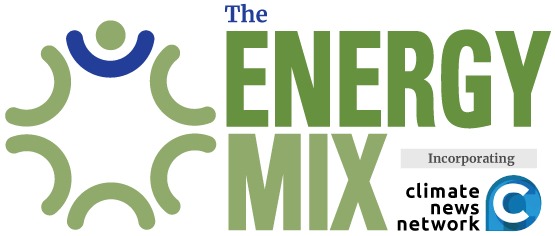Canada’s Natural Capital Is a Key in the Trump Era—But Needs a New Approach
The Trump 2.0 administration’s assault on the rules of world trade and its disruption of other key global elements of the post-Second World War era have made it essential to reset Canada’s economic strategy.
The U.S. tariffs already imposed and the threats of more to come are unprecedented since the 1930s. They have strained alliances and created huge uncertainty for the re-elected federal Liberal government, the provinces, business and consumers.
Amid this extraordinary volatility, Canada’s natural capital is a largely overlooked competitive advantage, critical to supporting economic independence, resilience and productivity, write Peter van Dijk, Joanna Eyquem, and James K. Stewart for Policy Options.
This natural capital—forests, wetlands, grasslands and other ecosystems—is more than an environmental treasure. These are powerful economic assets hidden in plain sight.
Canada urgently needs to use its natural capital as a foundation of its long-term economic strategy, investing in restoring and sustaining green infrastructure, and disclosing in government financial statements the value, condition and trends of natural capital.
Natural assets underpin our economic well-being. They provide protection from floods and heatwaves. They supply clean water and air, and contribute billions in services to public health.
Unlike traditional infrastructure, natural assets do not depreciate unless they are degraded directly by pollution or overuse, or indirectly from climate change or the introduction of invasive species. The financial value of preserved assets often increases as more of our population depends on them.
Natural capital offers multiple services simultaneously. For example, a forest sequesters carbon, filters water, cools surrounding areas and provides crucial habitat for biodiversity. No human-made structure can compete with this array of benefits.
Yet, natural capital remains drastically undervalued and largely invisible in our public accounts.
Canada’s wetlands alone are estimated to provide $225 billion in ecosystem services annually (roughly 8% of GDP). But we do not even have a complete national inventory. This is unintended fiscal negligence in an era of intense budgetary pressures when every dollar of public spending should deliver resilience and long-term value.
What is worse, most governments in Canada—federal, provincial and local—fail to track or disclose the condition and value of their natural assets. This blind spot leads to short-sighted decisions, degradation of existing assets and underinvestment in nature-based solutions that could save us money, foster more economic growth and strengthen our communities.
Encouragingly, the re-elected Liberal government’s campaign platform explicitly pledged to protect more of Canada’s natural heritage, given the threats of “climate change and unsustainable development practices.” Its key promises in this area include prioritizing natural infrastructure, mapping Canada’s carbon and biodiversity-rich landscapes, and mitigating environmental and species-at-risk impacts in areas facing substantial infrastructure development.
Yet, serious risks remain from the absence of federal valuation and accounting for natural assets, beginning with the ever-present difficulties of implementing programs versus making campaign pledges. The challenge of meshing the Liberal housing and natural resource development goals with the party’s biodiversity, conservation and natural infrastructure pledges also bears watching.
At the provincial level, the risks to, and inadequate valuation of, environmental lands and biodiversity have been evident in Ontario and Quebec in recent years.
In their efforts to boost housing supply, a range of provincial (and federal) policies still facilitate building in areas at high risk of major flood and wildfire damage. With rising pressures in 2025 to accelerate resource and other development, protections for species at risk are being scaled back in Ontario and other jurisdictions.
At a minimum, the following elements should be part of a new natural capital strategy:
• Invest in natural infrastructure. Restoring wetlands, protecting urban tree canopies and conserving grasslands are vital for the environment, as well as for reducing fiscal pressures from floods, heatwaves and water treatment costs. They are also much less expensive than man-made infrastructure. The cost of sustaining green infrastructure is often a fraction of repairing or replacing concrete and steel, while delivering broader benefits.
• Close the accounting gap. Government financial statements must begin to disclose the value, condition and trends of natural capital. This is already under way with a small group of forward-looking municipalities. International accounting standards for natural assets are on the way. Canada should lead, not lag, in adopting these frameworks across all levels of government.
• Recognize that natural capital is not a distraction from “real” economic policy. Instead, it must be a core part of economic policy. Natural assets directly shape our productivity, competitiveness and ability to adapt to shocks, whether from extreme weather or an erratic U.S. president.
Canada has already fallen behind in investing in climate adaptation. While spending far more on climate mitigation—but not nearly enough—current Canadian efforts will not shield us from the existing costs of climate change and biodiversity loss. Our response must be to build systems-level resilience, and that means protecting and valuing the very foundation on which our economy rests.
It is time for governments to embed natural capital into budgets, policies and financial reporting. It is time for Canada to create a national inventory of natural assets and time for the federal government, working with the provinces and territories, to lead a natural capital investment strategy that aligns fiscal responsibility with ecological sustainability.
Natural capital is Canada’s quiet and underappreciated strength. It is time we sustained and treated it like the decisive economic advantage it truly is.
Cover photo: Moraine Lake, Banff National Park, Alberta, Canada. (Josefine S/flickr)


